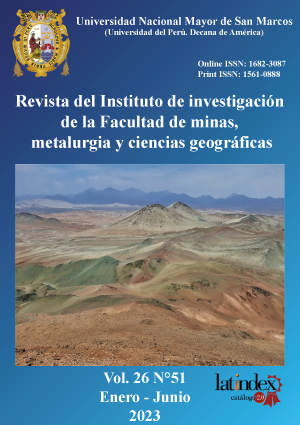Selection of the optimal alternative for the Toma Grande dam using the Hierarchical Analysis Method
DOI:
https://doi.org/10.15381/iigeo.v26i51.25013Keywords:
Selection of dam alternatives, analytical hierarchical process AHP, optimal dam typeAbstract
In this research work, the analysis and selection of the optimal type of the Toma Grande Dam is applied by using the analytical hierarchical process (AHP), considering 4 dam alternatives (CFRD, RCC, Gravity Concrete, Earth and Enrocado). For the application of the method, the factors that influence the selection of the type of dam were identified, which were called Subcriteria. These were grouped into 8 more representative groups, by means of a hierarchy tree, which were called Criteria (topography and geology, availability of materials, related works, dam safety, river diversion system, construction procedure, construction time and cost of work). The data for the Criteria were obtained from the basic engineering studies and a paired comparison matrix was constructed to obtain the weightings by comparing each of the Criteria with each other. The consistency relationship of the selection criteria was established, in order to then construct the pairwise comparison matrix for the selection of the type of dam according to the Criteria. The results of the analysis indicate that the Gravity Concrete dam as the optimal alternative dam type, with a weighting of 40%.
Downloads
Published
Issue
Section
License
Copyright (c) 2023 Hulinho Yordy Arbaiza Ocrospoma, Samuel Ismael Quisca Astocahuana

This work is licensed under a Creative Commons Attribution 4.0 International License.
AUTHORS RETAIN THEIR RIGHTS:
a. Authors retain their trade mark rights and patent, and also on any process or procedure described in the article.
b. Authors retain their right to share, copy, distribute, perform and publicly communicate their article (eg, to place their article in an institutional repository or publish it in a book), with an acknowledgment of its initial publication in the Rev. Inst. investig. Fac. minas metal cienc. geogr.
c. Authors retain theirs right to make a subsequent publication of their work, to use the article or any part thereof (eg a compilation of his papers, lecture notes, thesis, or a book), always indicating the source of publication (the originator of the work, journal, volume, number and date).






